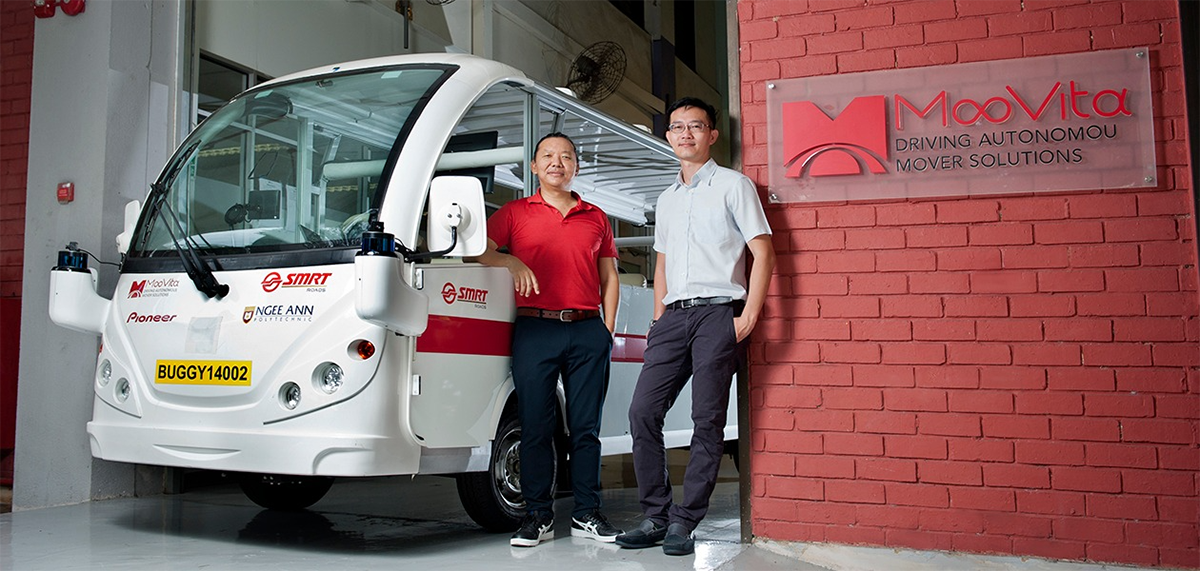A box-like vehicle revs its engine as an elderly passenger announces his destination to a large screen on the dashboard. The passenger settles into his seat and enjoys the journey as the self-driving car navigates itself on the roads. In the future, owning such an autonomous vehicle (AV) may be the norm, especially for the elderly and disabled. MooVita, a high-tech start-up in Singapore is at the forefront of this development, specializing in driverless software solutions for urban environments. Sioux Technologies support them on the technical front.
MooVita’s goal is to expand to the larger European market, and develop a full-stack External Human-Machine Interface (eHMI) software that can help AV's fully assimilate with the urban environment. Successful development and deployment of the technology would allow them to interact with road users in a natural manner.
Multilingual messaging for a multilingual nation
While AV public trials in Singapore have gained momentum recently, with two new sites launched at the National University of Singapore and Sentosa last year, the AVs lack the capabilities to socially interact with the public. In an ageing society like Singapore, the importance of a more human touch in automated transport is ever so important.
In August 2019, MooVita was successfully paired with Dutch multidisciplinary high-tech solution provider Sioux Technologies, which has a strong Human-Machine Interface (HMI) department.
Overcoming challenges to maximize potential
Sioux’s competitive edge lies in researching complex environments where humans and machines interact through clear and precise communication, such as in cleanrooms or on time-critical production lines. For MooVita, transferring this knowledge into autonomous transport is vital. There will be a rapidly increasing number of situations where humans and machines interact with each other.
MooVita is also in the midst of working with Sioux to do research on the design and production of multilingual messaging hardware. While the design and development of the eHMI is still in its infancy, MooVita and Sioux are looking to conduct closed group trials in a real-world setting with people of diverse ages and ethnicities during the final phase of this project — expected to last until the end of 2021 at least.
“The challenge now is to understand the behavioural aspects of the external environment before implementation,” says Kelvin Ng, responsible for Sioux Technologies in Singapore. “The whole idea is to make a human-like persona so that AVs can communicate with others on the road.”
Once developed, the eHMI methods and devices “will be of keen interest” to other AV manufacturers with diverse value chains and similar objectives, says Dr Limbu, COO at MooVita. “The market potential of AV is promising, based on the anticipated global sales of autonomous and light vehicles in the near and not-too-distant future,” he added. According to a 2018 forecast by business information provider IHS Markit, global sales of AVs are expected to hit 33 million units annually in 2040, with European sales making up 5.5 million units.
While COVID-19 has created a “new normal of work and life” for MooVita, it is planning further ahead to catch up on missed opportunities and hoping for minimal impact on the project schedule. “As part of Singapore’s smart mobility ecosystem and (a) pioneer in autonomous mover solutions, MooVita is committed to helping Singapore fulfil one of her Smart Nation Initiatives — Smart Urban Mobility,” said Dr Limbu.
Source: https://www.ipi-singapore.org/success-stories/when-self-driving-vehicles-speak-to-you.html
